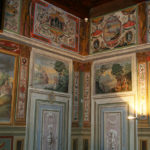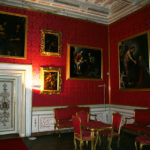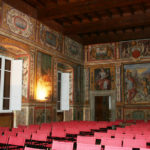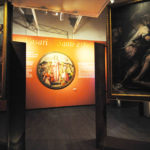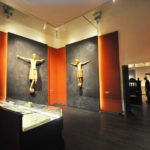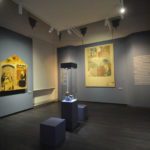The Diocesan Museum of Sacred Art Museum was recently re-christened the Mudas Museum with its transfer to Arezzo’s Palazzo Vescovile. It is the embodiment of the Arezzo area’s religious and cultural vitality, with its rich treasure trove of priceless art.
Located on the first floor, the rooms house a remarkable collection of important pictorial works from the 15th to 19th centuries; the 16th-century frescoes painted by Teofilo Torri, the painter from Arezzo; and the papal apartment that hosted Pope John Paul II during his 1992 visit to Arezzo. The heart of the collection are some objects brought together for the historical exhibition of sacred art held in Arezzo in 1950, on the occasion of the ninth centenary of Guido Monaco’s death. It was entitled Exhibition of Sacred Art from the Diocese and the Province from the 11th to the 18th Century.
There is a collection of prestigious silverworks and liturgical vestments and hangings, including the famous Siena pax board depicting on one side, the dead Christ supported by angels and, on the other, Our Lady of Sorrows, which is to be pointed out for its importance. It is a highly refined and very rare work of French manufacture in gold, enamel, precious stones and pearls. Dating from the early 15th century, the pax board was donated by Pope Pius II Piccolomini to Siena’s cathedral, which in turn donated it to the cathedral of Arezzo in 1799 during the anti-French uprisings of the Viva Maria movement.
One of the rooms houses three large and rare wooden crucifixes, from the 12th and 13th centuries, symbolizing Christ’s sacrifice on the cross. The oldest example dates back to 1179, and was originally covered with gilded copper plates and as a result conceived as a large silver work.
Of particular interest is the detached fresco of Saint Jerome Penitent, datable to 1480, with, exceptionally, its sinopia displayed next to it. It is by Bartolomeo della Gatta, the most important painter of southern Tuscany after Piero della Francesca.
Continuing, we see works from the 14th and 15th centuries in which the prevailing theme is the Annunciation. We can admire works by such local artists as Andrea di Nerio and the better known Spinello Aretino. Among the many works, the unusual and extraordinary large terracotta attributed to Bernardo Rossellino and dated 1432 stands out.


